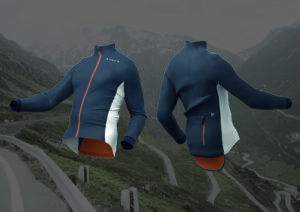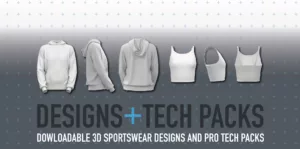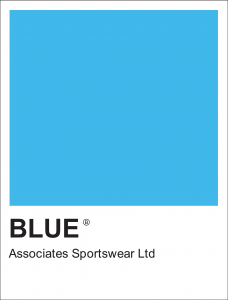Empathy is one of the most important tools a designer can use when designing a product or a service. Being able to put yourself into the mind or position of the end-user and to then use that perspective to inform key decisions during the design process can be invaluable to the final result. These decisions apply to almost all of the aspects we consider within a range of clothing and accessories from fabric, fit, trim and colour.
Sportswear kit designed for the purpose
Anyone who participates in a sport knows that there is a huge part of the sporting and fitness world that is consumed with kit and kit knowledge. Any sport that you take part in will have a specific kit or garments to benefit you within that activity and it has all been designed to give some form of marginal gain within that sport.
Fabrics can vary a great deal across sportswear and this is all to do with how they will perform when worn within the environment they have been selected for. The phrase “dress for your last mile not the first” was said to me by a running coach in preparation for a race as a young runner, and that has been incredibly useful as a way to explain my apparent madness when asked why I’m wearing nothing but split shorts and my club vest on the snowy start line of a fell race in the lake district. I get very hot when I run so I wear specific running clothing I know I will be comfortable through the race.

Temperature control
Controlling temperature is a huge factor when choosing fabrics for sportswear and we can implement small design features within the fabric itself to help with this.
Garments must be designed to perform for the complete duration of the activity they are aimed at. A base layer fabric must be comfortable and soft for next to skin contact with enough stretch as to not restrict movement whilst being light enough to be breathable and be constructed from fibres that will effectively wick moisture away from the body and regulate body temperature. A base layer may also be used for warmth in extreme cold and may not need to be as breathable but instead feature brushed qualities to better trap heat next to the skin.
Everyone at Blue Associates Sportswear has a great understanding of these aspects to make informed decisions on fibre and fabric and would be able to know whether a fabric would be suitable for a particular application just by holding and feeling a fabric hanger.
Understanding how garments perform on their own is just as important as understanding how garments will perform together as part of a range. Layering up garments in particular ways and understanding the role of each of those layers can only be fully understood when you have experienced the benefits for yourself.
Take cold and wet weather cycling, for example, having cycled in some horrendous conditions both racing and just for exercise it is incredibly important to understand how to layer up and how the design of each piece can benefit the rest.
If riding (or doing any form of exercise) in very wet weather it is important to understand the benefits of different waterproof and breathability ratings and how these affect the performance of the clothing and the user. For fast activities where the heart rate and temperature will be high, it is just as important for a garment to be breathable as well as waterproof and you must balance these to avoid sweating too much and becoming wet from under the garment itself. The addition of venting or mesh panels in areas that are not exposed to the elements whilst in a riding position are ways to enhance the temperature regulating properties of a garment.
Understand your users needs
The initial design stage of a range benefits massively from an in-depth knowledge of the targeted sport, whether that comes from the client or the designer, it is incredibly important to understand the functional aspects of a design before moving into sampling where these aspects can be tested.
Pockets, zips and trim are all aspects that change and are adjusted slightly to accommodate different sports and the athlete’s requirements. Pockets on a running short may be designed to store a very specific kind of food; Gels, a source of nutrition widely used across that sport and usually a uniform size and shape. A zip on a cycling jacket may need to be of a different quality or size to make the process of locating the zip and closing the zip more easily whilst cycling on a bike.
An outdoor jacket aimed at extreme weather conditions will need to utilise additional aspects of trim to make using the jackets zips and pockets easier to use with gloves on in cold conditions. The earlier these aspects are known and can be applied to a design the earlier they can be added and in turn, sampled to then be tested in real-world scenarios.
We encourage testing wherever possible as this is proof of concept, particularly if some aspect of the design is innovative and therefore it will need to be validated. Having spent hundreds of hours cycling and running I have gained extensive knowledge to know if a garment is fit for purpose almost immediately.
Training and competing across different disciplines, working in sports retail combined with a keen interest in sportswear whilst studying product design is what got me into this area of design and all of these aspects will then continue to help me within this career as sports and the clothing that goes alongside them develop and change.
Please get in touch for more information or a free quote.
Written by Jake Lowther
Designer and Product Developer




